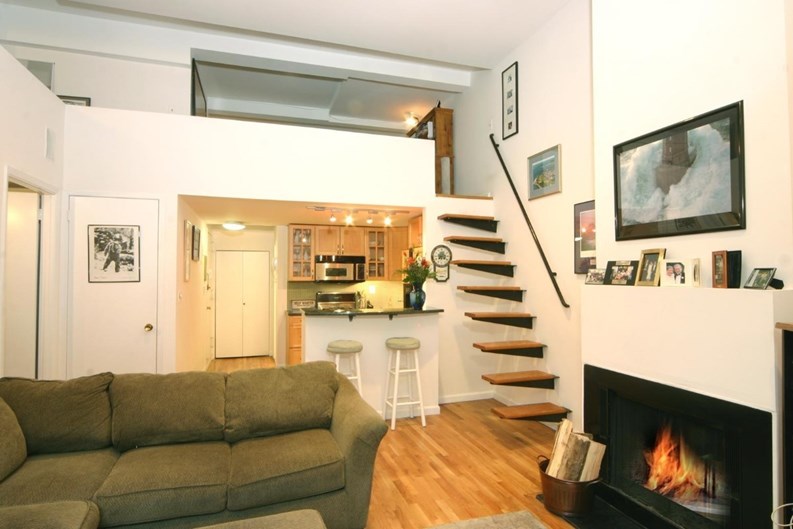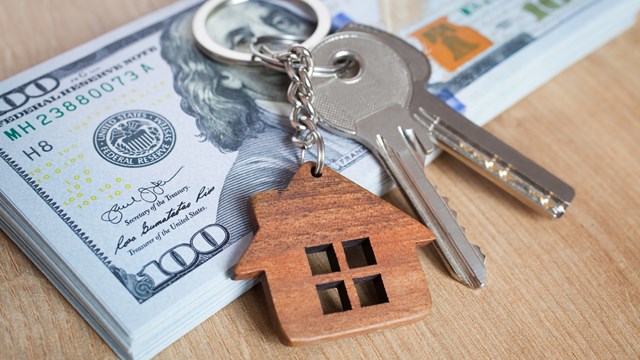The vast majority of co-ops and condos that are put on the market are not in picture-perfect shape for a rapid and high-priced sale. Prospective buyers, who view those apartments, often cannot see beyond the superficial defects and so fail to appreciate an apartment's potential. It is essential, therefore, that before an apartment is put on the market, it is made to look as attractive as possible. This is called staging, an essential step toward ensuring that an apartment does not stay on the market for an inordinately long period of time and is sold for the highest possible price. There are two categories of staging: primary and secondary, and each contains five subcategories, all of which are prerequisites, if staging is to achieve the desired results.
Primary Staging
Cleaning: There is nothing that turns off a prospective buyer faster than an apartment that is dirty and has a foul odor. Even if an apartment has been lived in for many years, it can still be presented as clean and fresh. That means that the floors have been cleaned and shined, the rugs have been vacuumed and shampooed, sinks have been scoured of stains, beds are beautifully made with appealing covers, and mirrors are cleaned. It is also critical to have spotlessly clean windows, even if an apartment does not have attractive views.
Unclutter: Have you ever walked into an apartment and felt that you had to navigate carefully amidst the clutter of strewn about toys; piled up magazines, books and boxes; and furniture that seemed out of place? Prospective buyers should not have to feel as though they need maps and compasses to navigate around an apartment. Not only should toys, books, magazines, boxes and rubber dog bones be put away, but counter tops should be cleared of clutter, magnets should be removed from refrigerators and bathtubs should not be used as storage bins. In other words, an apartment should look as tidy and presentable as a showroom.
Lighting: "Let there be light" should be the motto of every apartment owner. Lighting is the key to making an apartment seem larger than it actually is; it adds brightness and helps to create a cheerful environment. When staging an apartment, one should be prepared to replace low wattage bulbs with high wattage ones, and if necessary, add new lamps to brighten dark corners.
Window Treatments: Window treatments are another crucial element for proper staging. If an apartment has wonderful views, one must allow those views to be stars of the show. In addition, even the most exquisite window treatments should be pulled back so as not to obstruct vistas and light. It is important to use sheer, translucent shades or curtains that attractively camouflage unappealing exposures, but still allow as much light into an apartment as possible.
Fresh Plants: Fresh flowers and green plants dress up an apartment. They add a sense of vibrancy and elegance that have a positive effect on the perceptions of prospective buyers.
Secondary Staging
Wall Refinishing: As an apartment ages, it may require a minor face-lift. Old walls with dreary and cracking paint require repainting, using a light, off-white color. Bright white should be used for ceilings, moldings and doors, and the brightness will create a distinct and upscale contrast. Wherever there are tiles with grouting that is discolored by age or mildew, re-grouting will give an old bathroom a fresh, rejuvenated appearance.
Floor Refinishing: Worn, scratched, and discolored floors can make an otherwise attractive apartment look dingy and gloomy. When floors have been sanded and poly-urethaned, an entire apartment has a quality of pristine elegance.
Increasing/Decreasing Room Count: Increasing an apartment's room count, when possible, will dramatically increase the value. Keep in mind, however, that for an additional room to be legal, it must have a window. On numerous occasions, I have assisted sellers with the renovation of large L-shaped living rooms and converted the bottom of the L into a separate bedroom by adding a wall with French doors. Another example involved helping a studio owner transform a large windowed dressing area into a larger room by removing two enormous closets. After adding a wall and a door, the seller had become the proud owner of a one-bedroom apartment. The result was over $100,000 in additional profit for a $2,000 investment.
There are times, however, when walls should be removed: one of my clients had improperly divided a large, magnificent living room in half by putting up a wall. He had created a second bedroom, but unfortunately left a living room that was windowless, cramped and dark. When the wall was removed, the tiny living room was converted back into the grand and inviting room that it had originally been.
Minor Renovations: An investment in a variety of minor upgrades can substantially increase the value of an apartment. For example, replacing old kitchen appliances with new ones, replacing Formica counter tops with granite ones, re-facing old kitchen cabinet doors, installing new handles, new bathroom medicine cabinets, new vanities and new light fixtures can all add significantly to the price of an apartment.
Furniture: Using furniture is essential when staging an otherwise empty apartment. One can rent appropriate furniture so that potential buyers can see how an apartment will look when furnished. Not only does an empty apartment look naked and smaller than a furnished or dressed-up one, but some buyers are baffled by an empty apartment, wondering if the space will fit their needs. In many other cases, existing furniture must be re-arranged so that an apartment has flow from room to room. Furniture should always fit a room and never look out of place. For example, I recently sold an exclusive listing of a two bedroom apartment that was furnished as a one bedroom. The second bedroom had been converted to a dining room, while the exquisite dining foyer was left empty. When I re-staged the dining foyer with dining furniture where it belonged, and I re-furnished the second bedroom as a bedroom, the apartment sold within days of it being put on the market and at a record-breaking price.
Staging is obviously a critical ingredient for selling apartments rapidly and at the highest possible prices. It is also essential that one hire a broker who is a visionary and has the experience to guide one in the art of staging. For what amounts to a relatively minimum cost and effort, one can tremendously maximize the value of one's home.
Carol Levy is president of Carol E. Levy Real Estate. She specializes in representing buyers and sellers of high-end co-ops and condos.







Comments
Leave a Comment